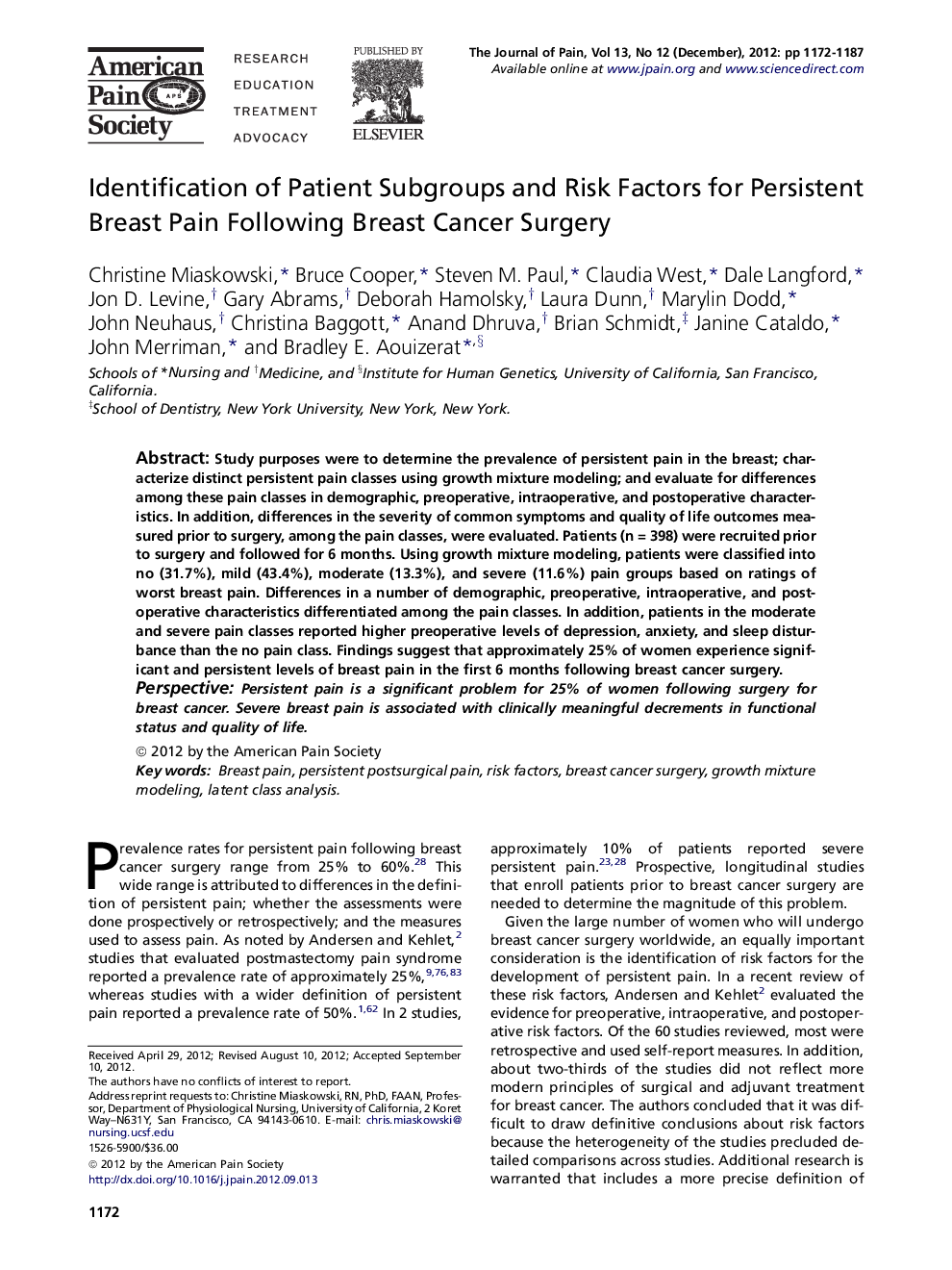| Article ID | Journal | Published Year | Pages | File Type |
|---|---|---|---|---|
| 2729178 | The Journal of Pain | 2012 | 16 Pages |
Study purposes were to determine the prevalence of persistent pain in the breast; characterize distinct persistent pain classes using growth mixture modeling; and evaluate for differences among these pain classes in demographic, preoperative, intraoperative, and postoperative characteristics. In addition, differences in the severity of common symptoms and quality of life outcomes measured prior to surgery, among the pain classes, were evaluated. Patients (n = 398) were recruited prior to surgery and followed for 6 months. Using growth mixture modeling, patients were classified into no (31.7%), mild (43.4%), moderate (13.3%), and severe (11.6%) pain groups based on ratings of worst breast pain. Differences in a number of demographic, preoperative, intraoperative, and postoperative characteristics differentiated among the pain classes. In addition, patients in the moderate and severe pain classes reported higher preoperative levels of depression, anxiety, and sleep disturbance than the no pain class. Findings suggest that approximately 25% of women experience significant and persistent levels of breast pain in the first 6 months following breast cancer surgery.PerspectivePersistent pain is a significant problem for 25% of women following surgery for breast cancer. Severe breast pain is associated with clinically meaningful decrements in functional status and quality of life.
